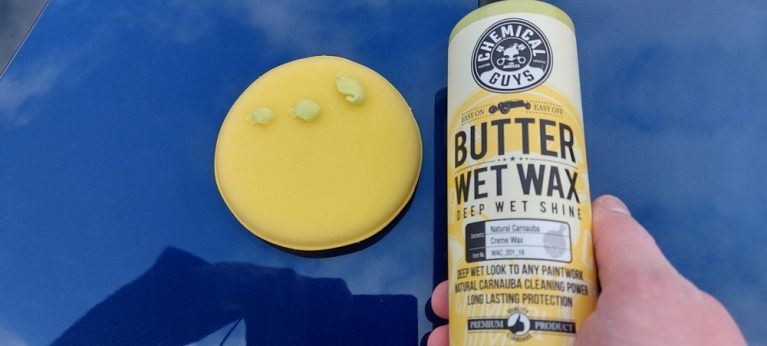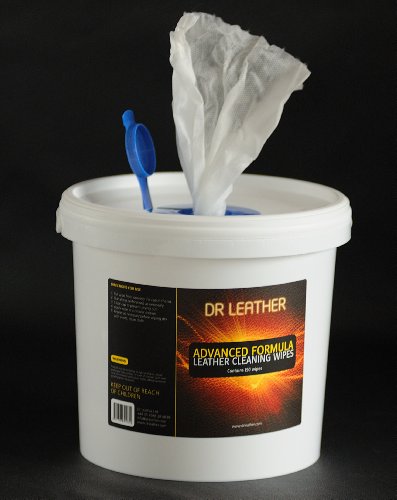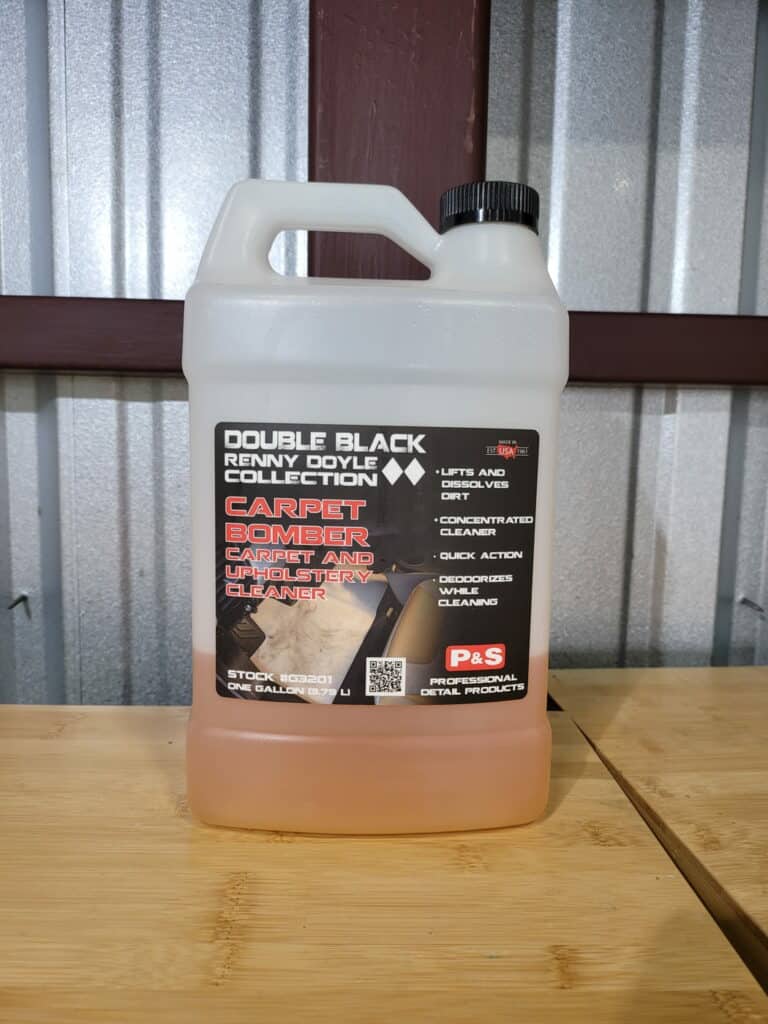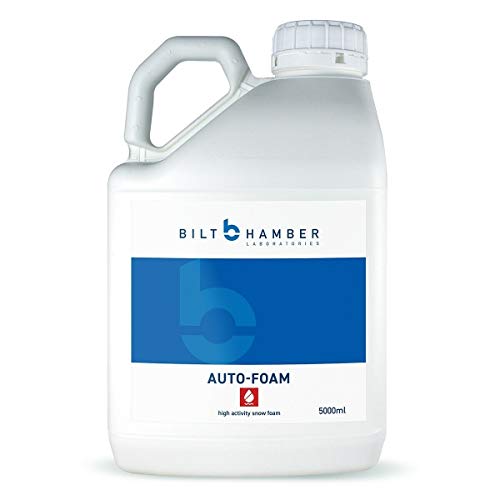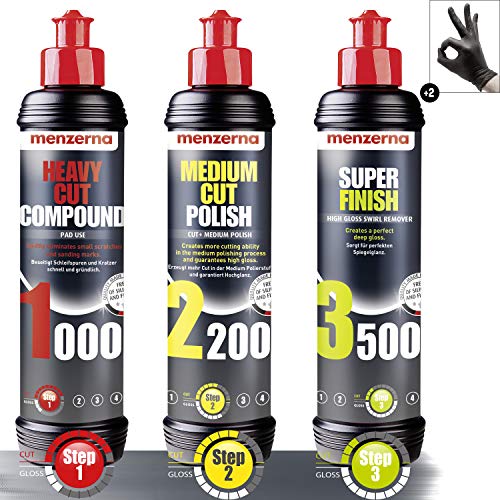Dilution Ratios for Car Detailing
When you buy a car cleaning product off the shelf of a supermarket or some car parts stores, it will more than likely be ready to use (RTU). You do not need to worry about diluting the product with water, it can be used straight out of the bottle.
However, if you buy products from a dedicated detailing manufacturer, these are very often concentrated.
This has several advantages:
- Packaging can be reduced
- Products can be diluted to suit different needs
- Products can be offered to customers at a much better value than buying an RTU product.
Today I’ll show you everything you need to know about dilution ratios.
How to Work Out Dilution Ratios for Car Detailing
Dilution ratios for car detailing can be confusing at times. You’ll normally see a ratio on a bottle, that might be 1:4 or 1:10. This means that for every 1 part of the product you add to a spray bottle, you would add 4 or 10 parts water.
First off, I advise buying yourself a 100ml measuring cylinder, which will enable you to accurately measure products.
Let’s say you want to fill a 1L spray bottle with a citrus pre-wash, that the manufacturer advises diluting 1:25.
To work out how much product you should add to the bottle, add the numbers either side of the ratio, so in this case 1+25=26. The bottle has a volume of 1000ml, so we divide the capacity of the bottle by the sum of the ratio. 1000ml divided by 26 equals 38 ml.
So, you would add 962 ml of water to the bottle, and then add 38 ml to have a bottle of citrus prewash at 1:25 ratio.
I realise this all sounds a bit pedantic and you do not need to worry about adding a bit more or a bit less. In this example, adding 40ml of the product will not produce any noticeable difference.
Some car shampoos work well at very large dilution ratios, for example, 1:1900. So, if you have a 20-litre bucket, you will only need 10 ml of shampoo in your bucket. Bilt Hamber Auto Wash is a great example of this.
You may also see manufacturers using percentages to denote the dilution ratios.
Let’s say you want to dilute a degreaser at 10%. For a 2-litre pump sprayer, we divide the volume of the bottle by 100- that’s 2000ml by 100 giving us 20 ml.
We then multiply this value by the percentage ratio we want to use. In this case, we multiply by 10, giving us 200ml. So, a 10% dilution into a 2L bottle would mean we use 200ml of product, and 1800 ml of water.
Reference table for 1L bottle dilutions
| Ratio | Product (ml) | Water (ml) |
|---|---|---|
| 1:1 | 500 | 500 |
| 1:2 | 333 | 667 |
| 1:3 | 250 | 750 |
| 1:4 | 200 | 800 |
| 1:5 | 167 | 833 |
| 1:10 | 90 | 910 |
| 1:20 | 48 | 952 |
| 1:25 | 38 | 962 |
| 1:50 | 20 | 980 |
| 1:100 | 10 | 990 |
Panel Impact Ratios (PIR) for Car Detailing
Sometimes manufactures will advise using a panel impact ratio to work out how much product should be added for dilution when mixing a snow foam or traffic film remover. The most notable example is Bilt Hamber Auto-foam, which should be used at a PIR of 4%.
All pressure washers and foam cannons will have different specifications. Pressure washers will have different pressure ratings and flow rates, and this will have an effect on the amount of foam produced. PIR allows the correct amount of product to be used, preventing wastage, or disappointing results from using too little product.
How to Work Out Panel Impact Ratios (PIR) For Car Detailing
PIR is very easy to calculate, but it takes a little bit of time. Along with your pressure washers and foam cannon, a large bucket or container, a measuring jug and a calculator are needed.
Start by filling the foam cannon with exactly 1 litre of water (1000 ml). Then ensure the dial on the foam cannon is set to the maximum concentration, and spray water into the bucket.
Keep an eye on the foam cannon, and when it is empty, stop.
Then measure the amount of water in the bucket or container. I used a 1L measuring jug and found the bucket contained 11 litres (11000 ml) in my test.
To calculate the PIR, you then have to take a percentage of the amount of water in the bucket. For a 4% PIR, I took 4% of 11000ml, so 11000ml x 0.04 = 440ml.
This number – 440ml – is the amount of Bilt Hamber Auto-foam I need to add to the lance and top up with water, so it will contain 440ml of product and 560 ml of water.
If a different PIR is needed, for example, 6%, simply multiple the amount of water in the container by 0.06 to work out how much product is needed.
FAQ
How do you dilute a detailing product?
You can dilute a product based on the amount of water you want to use. Simply measure out the product and then tip it into the water. You will need to work out the correct dilution ratio for this.
How do you work out a dilution ratio?
Dilution ratios will either be as a percentage (10%), a ratio (10:1) or PIR Panel Impact Ratio (10%). Each works as a base of how much water you have to start. 1L of water would need 90ml of product for 10:1 and 100ml for 10%.
What is a 10 to 1 ratio?
A 10:1 ratio would mean that you need 1 part of a product for every 10 parts of water. If you have 1000ml of water, then you would need 100ml of product. If you need 1,000ml of product and water combined, you would need 90ml of product to 910ml of water.
How do you calculate PIR (Panel Impact Ratio)?
First, you need to see how much water your pressure washer and lance distribute based on it being filled with 1L of water. Simply spray into a bucket until lance is empty, then measure water in bucket. Take this number and multiply it by the PIR percentage. An 11,000ml distribution of water is about average. Multiply this by PIR, in this case, 4% and you get 440ml of product and 560ml of water, per 1L lance.


